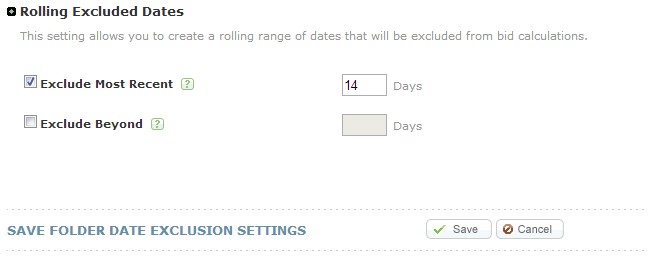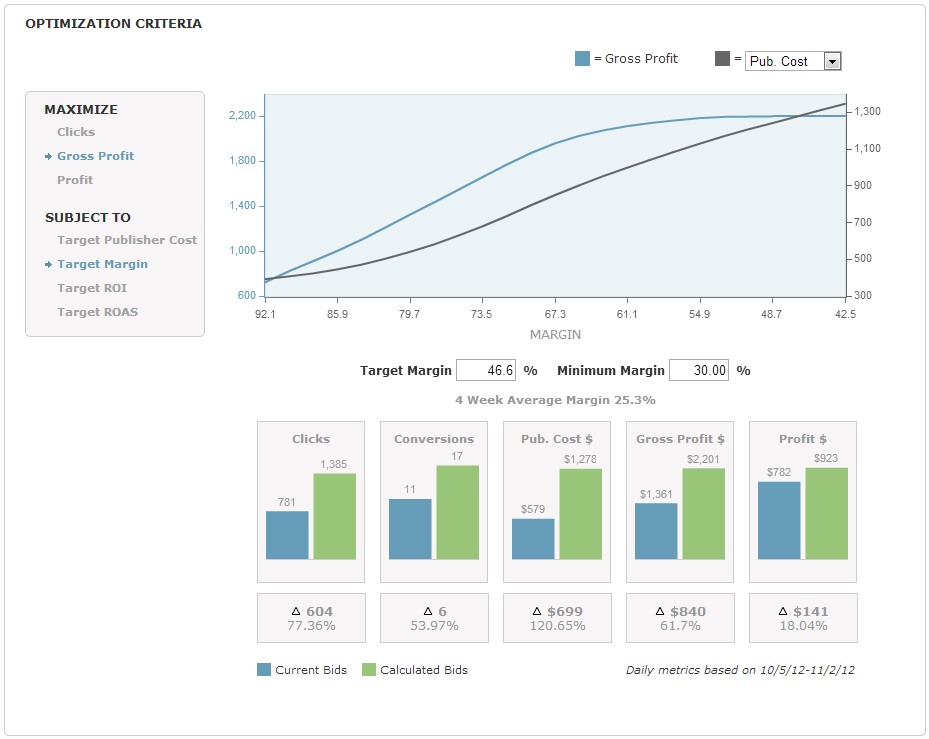Advanced Paid Search Bidding Solutions: 5 Must-Have Capabilities
In the competitive paid search landscape, advertisers rely on sound bidding strategies to drive clicks and conversions, and ultimately acquire more revenue. However, business and bidding requirements that vary significantly across industries, publishers, devices, and geographies create a highly complex auction environment. To address this complexity and satisfy bidding requirements, search marketers lean on a […]
In the competitive paid search landscape, advertisers rely on sound bidding strategies to drive clicks and conversions, and ultimately acquire more revenue. However, business and bidding requirements that vary significantly across industries, publishers, devices, and geographies create a highly complex auction environment.
To address this complexity and satisfy bidding requirements, search marketers lean on a wide variety of proprietary, publisher and third-party bidding solutions for calculating optimal bids. Unfortunately, of the solutions that are characterized by the six core attributes identified last month, very few address the business requirements that add additional layers of bidding complexity.
Today, we’ll identify five capabilities that not only address these business requirements, but also enable search marketers to execute advanced paid search bidding strategies.
1. Excluded Dates
The time between an initial ad click and a purchase, or conversion latency, varies across industries and product lines. This latency can range from same session to several months; and, for certain businesses with high consideration products or services, revenue can go unattributed to click and cost data for extended periods of time.
As a result, bid calculations that leverage these periods of incomplete data fail to maximize revenue. To address conversion latency, search marketers need a bidding solution that allows them to exclude the most recent days from bid calculations. Dynamically extending or shortening a rolling exclusion window, depending on business needs, enables optimal bid calculations based on a complete picture of paid search performance.
In addition to excluding a rolling date range, search marketers also require a bidding solution capable of excluding specific dates and static date ranges. Throughout the year, brands experience increases and decreases in conversion rate and revenue-per-click (RPC) due to seasonality. Leveraging these periods of performance data often results in suboptimal bidding. However, through management by exception and using an advanced bidding solution, search marketers can quickly identify outlying or irregular data and exclude those dates or date ranges from bid calculations.
2. Multiple Conversion Types
Within industry verticals like financial services, automotive, and education, customers engage with brands across a multitude of touch-points. For example, a consumer looking to purchase a new car might download a brochure, request a quote, and locate a dealer prior to purchasing.
If the customer entered the conversion funnel through a paid search click, the revenue acquired from the sale of the car can be attributed back to the keyword. However, the conversion latency for purchasing a car can last from several weeks to several months. And, if the advertiser is hindered by disparate technology, this offline revenue may never be attributed back to their paid search program.
To remain competitive and respond to sudden changes in the auction environment, advertisers that experience high conversion latency must calculate bids based on proxy conversions that are defined by lifetime value.
Bidding solutions that can assign revenue to one or multiple top-of-the-funnel conversion types, like brochure downloads, quote requests, and dealer locators, enable search marketers to react quickly to top-of-the-funnel activity and measure the value of website engagement against downstream revenue.
3. Bid Dampening
Responding immediately to shifts in paid search performance enables bidding solutions to maximize conversion and revenue opportunities. However, automated bids can sometimes be too responsive.
Consider a retailer that’s just experienced a single purchase for twenty times the average order value from a single keyword. In conditions where outlying performance data, unrelated to seasonal or cyclical behavior, is used in calculating bids, inflated or deflated bids can result in suboptimal performance.
A bidding solution that allows the dampening of bids gives search marketers control over how responsive daily bids can be. For example, a solution that can be dialed in to only increase or decrease bids by 20% of the original bid would not over inflate the keyword bid in the scenario above.
4. Position-Based Bidding
Of the 85 percent of clicks that occur in the top ad positions, 59 percent of those are made on the first position (Compete 2012). Unfortunately, the limited ad real estate on the search engine results page (SERP) leaves brands susceptible to competitors bidding on branded and other business critical keywords. Competitors that bid aggressively on these terms can and often do secure a share of brand clicks.
To maximize ad visibility within the auction for these critical keywords, and maintain control over revenue outcomes, retailers must automatically suppress competitors that displace creative from optimal ad positions. Flexible bidding solutions that can target a preferred position range for these types of keywords enable search marketers to increase or decrease bids immediately following a competitive shift in ad position.
5. Forecasting & Performance Modeling
As business goals shift for a brand, so do the bidding goals for the search marketer. Whether it’s a move from conversion maximization to increasing ROI, understanding the changes in paid search clicks, cost, and revenue associated with these shifts in bidding goals requires “what-if” analysis.
Bidding solutions that can build these forecast models to anticipate changes in performance, coupling expected auction environments with historical performance data, enable search marketers to continue hitting their paid search goals regardless of changes to business goals.
Finding The Right Bidding Solution
Sophisticated bidding solutions satisfy two sets of requirements. At the very least, they are characterized by the six core attributes needed to execute on a sound paid search bidding strategy. However, as these strategies mature and become more complex, search marketers require additional bidding capabilities to not only address business-specific challenges like conversion latency, but also provide more control over the auction environment through position-based bidding and forecasting.
The right bidding solution provides advertisers with the flexibility to acquire more revenue while hitting aggressive paid search goals, and in the increasingly competitive search landscape, the five capabilities discussed above are must-haves for accomplishing just that.
Opinions expressed in this article are those of the guest author and not necessarily Search Engine Land. Staff authors are listed here.
Related stories



